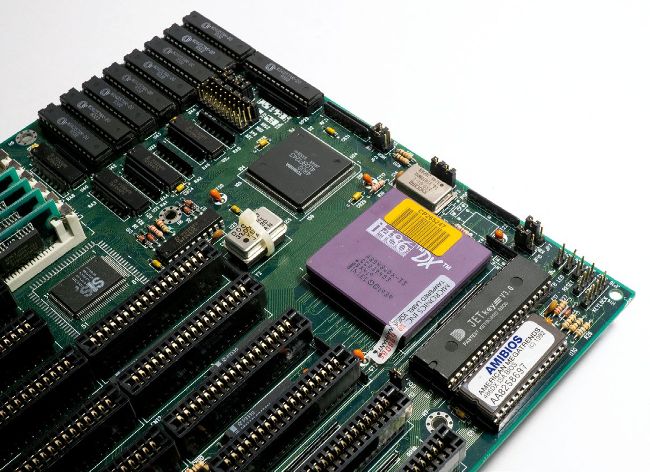TUTORIALS 486 PC emulation
How to easily emulate 486 PCs and run DOS
Relive the halcyon 32-bit years of PC computing, play your favourite games and look back at OSes of yore with the ever-dependable Les Pounder!
Credit: www.dosbox.com
DOSBOX
OUR EXPERT
Les Pounder is associate editor at Tom’s Hardware and when not writing about Raspberry Pi he is found tinkering with old computers.
T his author first got their first PC back in 1994: a Dan 486 DX 33MHz with 4MB of RAM. It was much more powerful than the Amiga 500, and almost three times the price. The author’s journey with computers so far had been via Commodore machines, but this Dan 486 PC captured his heart. He got it home and launched MS-DOS, but he had no manual or user guide. He taught myself MS-DOS and Windows 3.1 by making lots of mistakes, including formatting his 120MB hard drive and having to reinstall everything, and by installing a CD ROM drive incorrectly and the machine refused to boot.
The mid-1990s was a crazy time for PCs. They were still beige boxes that held mysteries such as IDE, SCSI, lots of wires and dust. Linux Format is devoted to Linux, but for this journey down memory lane we’ll take a look at emulating a Windows 3.1 era PC. First via a simple program that will enable us to run DOS-era games in Ubuntu. Then we’ll learn a little BASIC with Microsoft’s Quick Basic. Finally we’ll create our own Windows 3.1 PC in a virtual machine.
Emulating a retro PC
The retro PC scene has users who want to simply run their old games in an emulator, and it has users who

The 486 DX 33 may have only run at 33MHz, but coupled with 4MB of RAM and a little imagination you could fly an X-wing for the Rebel Alliance.
want to run real hardware with a subtle 21st century twist. Let’s start with emulation because it’s the simplest route to enjoying retro content. The champion of retro PC emulation is DOSBox which offers a quick hit of nostalgia with very little effort. To install DOSBox on a Debian or Ubuntu machine, open a terminal and type the following:
$ sudo apt update
$ sudo apt install dosbox
With DOSBox installed, launch the application from the terminal.
$ dosbox
DOSBox is an x86 emulator for 486 and early Pentium computers, and games. It’s dependable and works really well for a quick hit. When it first starts we see a familiar DOS prompt with drive Z as the active drive. DOSBox provides a brief help menu – highlighting that we’ve a Soundblaster compatible sound card and that we can learn more about using DOSBox via the intro command. At any time we can obtain general help using help , or for more detailed help use